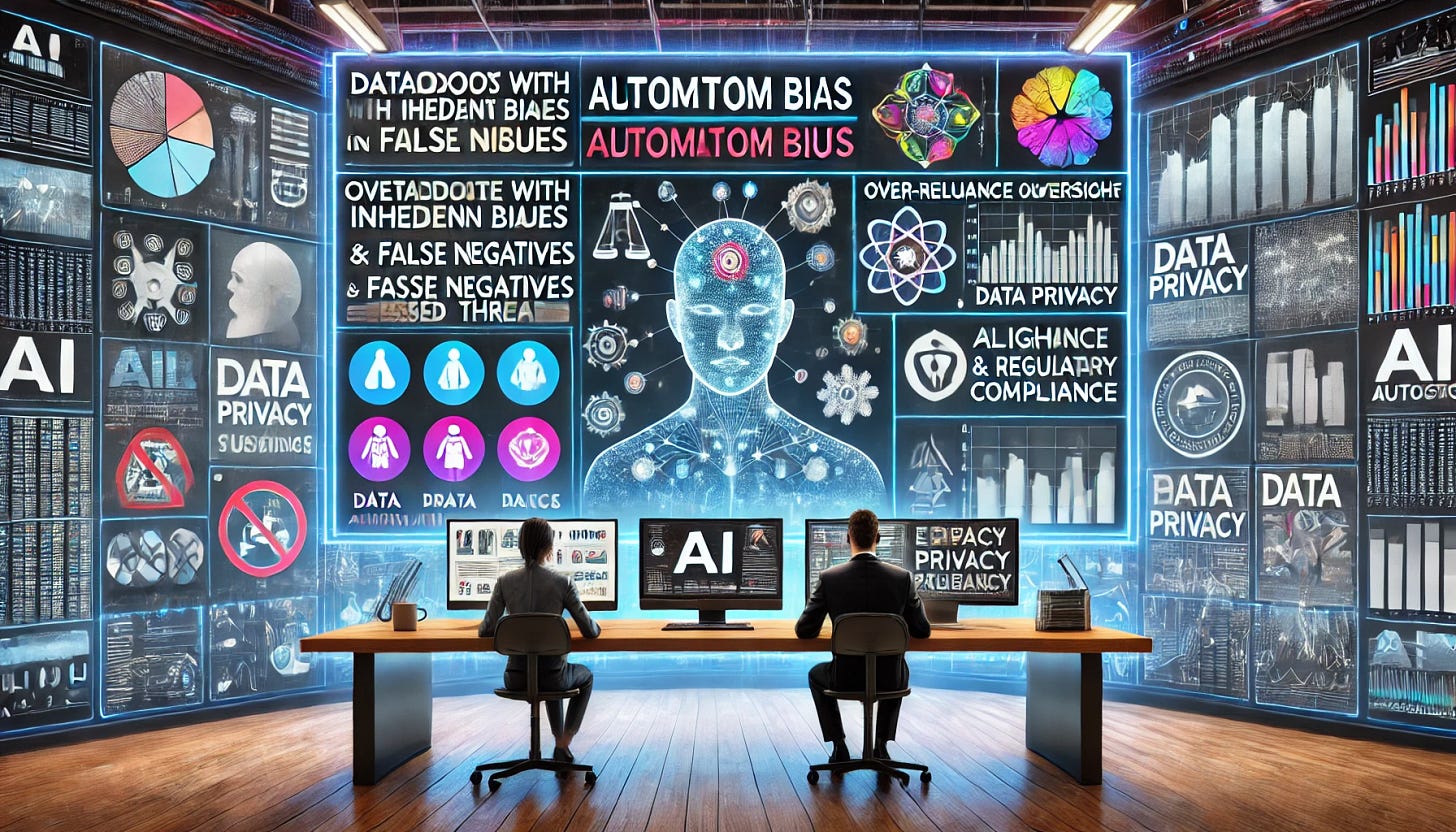Challenges and Future of AI in Cybersecurity Incident Response
As AI rapidly transforms incident response in cybersecurity, it presents unprecedented opportunities and complex challenges. The reliance on AI to identify, analyze, and respond to threats quickly and efficiently is undeniable, yet its implementation raises ethical, operational, technical, and regulatory concerns. In this article, we explore some challenges and future considerations.
Algorithm Bias and the Risk of False Negatives
AI's Reliability is Only as Good as Its Data
The effectiveness of AI-driven security tools depends heavily on the quality of the data they are trained on. Biases in training data, whether due to regional focus or the omission of certain threat vectors, can lead to blind spots in detection capabilities.
The Hidden Threat of False Negatives
False negatives are particularly dangerous, as they allow threats to remain undetected. AI models trained on unbalanced data are susceptible to missing nuanced indicators of compromise, resulting in delayed or absent responses to active threats.
Mitigating Bias Through Diverse Data Sources and Oversight
To combat this, organizations must diversify their data sources, continuously update training datasets, and apply human oversight to ensure that AI models evolve to meet emerging threats.
The Danger of Over-Reliance on Automation
Automation Is Not a Cure-All
While automation can streamline responses, an over-reliance on AI may reduce critical human judgment in complex scenarios, such as sophisticated social engineering attacks or zero-day vulnerabilities.
Balancing Efficiency with Vigilance
Without vigilant human oversight, security teams may miss out on subtle yet important indicators of compromise. By combining human intuition with AI’s processing power, organizations can achieve a balanced approach to threat response.
Ethical and Privacy Considerations in AI-Driven Incident Response
Data Privacy vs. Threat Detection
AI tools often require access to significant amounts of data, creating a potential clash between user privacy and security needs. Balancing these aspects is crucial to maintain trust.
Ensuring Compliance with Data Minimization Principles
Regulations like the GDPR emphasize data minimization, and organizations must avoid retaining unnecessary data that could infringe on user privacy rights. Ensuring transparency and accountability in AI systems is critical for building trust and meeting ethical standards.
Complexities of AI Implementation and Integration
The Reality of Integrating AI with Legacy Systems
Integrating AI into an organization’s existing infrastructure, especially with legacy systems, is often challenging. Compatibility issues and costs associated with upgrades or customization can hinder adoption.
The Challenge of Interoperability
AI tools thrive on comprehensive data from various sources, requiring seamless interoperability with other security tools. Organizations must ensure data flows freely between systems to maximize the potential of AI-driven security.
Bridging the Skills Gap in Cybersecurity and AI
The Demand for Dual Expertise
Effective AI implementation in cybersecurity requires professionals skilled in both domains, a skill set that is in high demand yet limited supply.
Continuous Upskilling as AI Evolves
As AI technologies evolve, so too must the skills of cybersecurity teams. Organizations should invest in training initiatives that keep teams abreast of both cybersecurity and AI developments, ensuring a workforce capable of managing AI-driven tools effectively.
The Evolving Threat Landscape and AI-Powered Attacks
Adversarial AI: Attacks Targeting AI Systems
Cybercriminals are increasingly employing AI to bypass defenses. Techniques such as adversarial machine learning manipulate AI algorithms, potentially deceiving AI-driven defenses.
The Need for Adaptable AI Defenses
To stay ahead, organizations must regularly update and adapt their AI models, integrating the latest threat intelligence to counteract AI-powered cyber attacks. This requires continuous investment in technology and expertise.
Regulatory Compliance and AI Governance
Navigating AI-Specific Regulations
As governments and regulatory bodies introduce frameworks specific to AI, cybersecurity teams must stay informed of these regulations, which may impact data handling and AI system design.
Ethical AI Standards and Compliance
Adopting frameworks that emphasize fairness, transparency, and accountability is becoming essential. Auditing AI models for bias, maintaining clear documentation, and ensuring decision transparency are key steps in aligning with emerging ethical standards.
Conclusion
AI’s role in cybersecurity will continue to grow, but to realize its potential fully, organizations must address these challenges thoughtfully. By focusing on transparency, ethical standards, human-AI collaboration, workforce development, and regulatory compliance, security professionals can effectively harness AI's power while preparing for the future of cyber threats.


